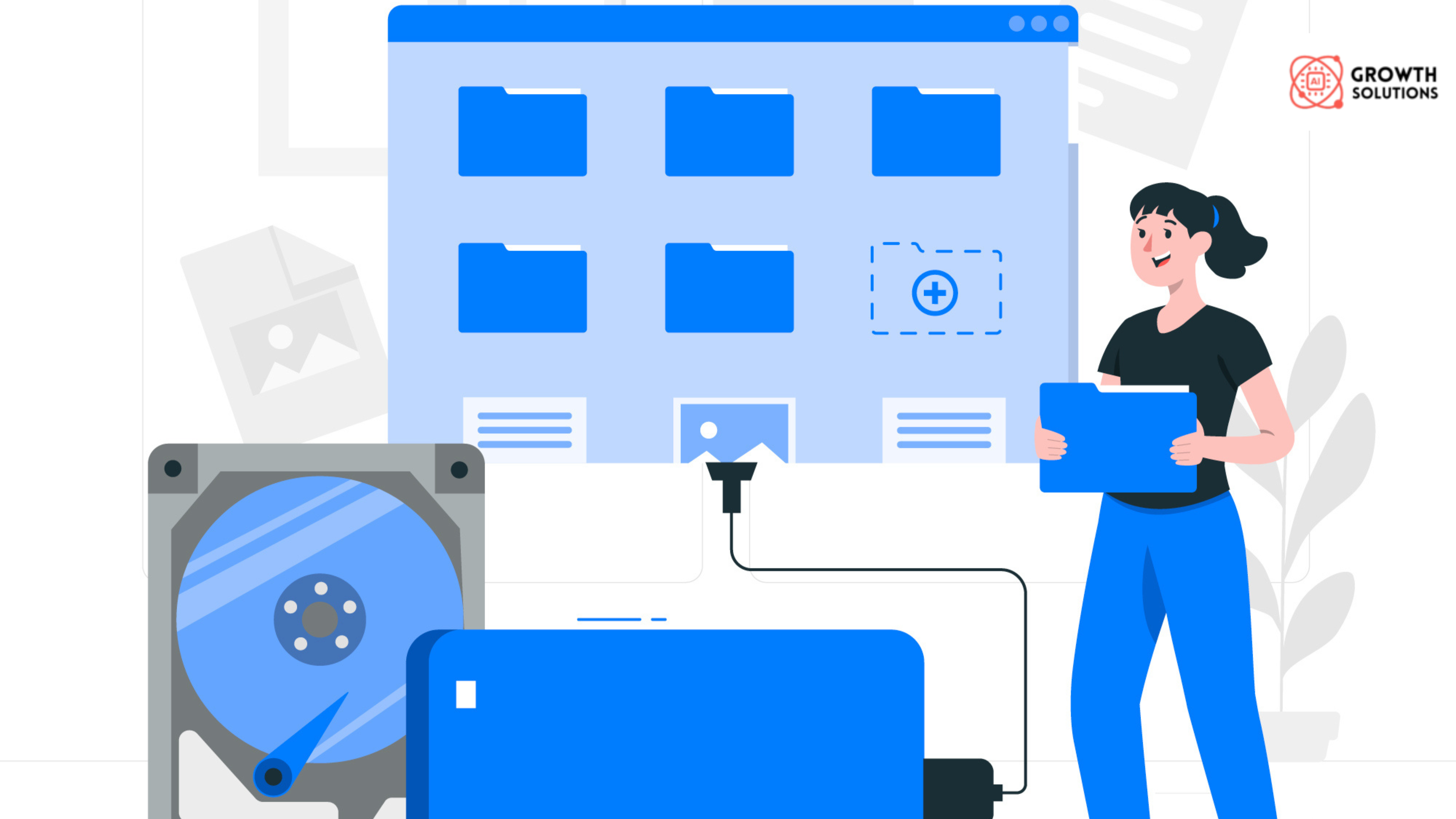18554493114
Call us for any question.
- support@aigrowth-solutions.com
- 349 Blue Point Rd Farmingville, NY 11738,USA
Call us for any question.
18554493114
Search for products
Blog Detail
- Home
- Blog
- Details
What Are Cloud Data Recovery Services, And How Are They Performed?
In today’s hyper-digital operations, data exists across dynamic, cloud-hosted platforms rather than locked inside a single machine. But with this flexibility comes vulnerability. Accidental deletions, misconfigurations, or even targeted attacks can cripple access to crucial data stored in the cloud. Unlike physical recovery from hard drives or local servers, cloud data recovery is a specialized discipline that combines advanced system access, automation, and rapid rollback mechanisms. At Ai Growth Solution, our focus is restoring cloud-based data efficiently whether from SaaS platforms, virtual environments, or hybrid deployments using precise methodologies backed by tailored Data Recovery Services and proactive support models.
Defining Cloud Data Recovery in a Distributed Digital Ecosystem
Cloud data recovery refers to the structured process of retrieving lost, corrupted, or deleted data from cloud-based storage infrastructures. This can range from restoring individual files within a Google Workspace or Microsoft 365 account to recovering entire virtual machines in an AWS or Azure environment. Unlike on-premise recovery, which requires physical hardware inspection, cloud recovery involves interface access through APIs, encryption layers, and platform-specific data retention configurations. Our IT Service team at Ai Growth Solution decodes the architecture of each cloud platform to isolate, retrieve, and verify data with forensic precision.
Why Cloud Data Disappears in the First Place
Despite the illusion of invincibility, cloud platforms are not immune to data loss. Human error remains the primary cause users accidentally deleting files, overwriting content, or triggering mass deletions through synced devices. Next comes sync misfires, where improperly configured cloud applications wipe out content or misalign versions. Ransomware can now infiltrate cloud environments as easily as on-site systems, encrypting cloud files and backups alike. Even platform outages or configuration rollbacks by cloud vendors can result in unexpected data rollbacks. These are the moments when reliable Data Recovery Services are not a luxury they are essential.
The Functional Anatomy of Cloud-Based Recovery
Cloud recovery operates on a foundation of redundancy and version control. Backups are not simple copies they are encrypted snapshots taken at regular intervals and stored either within the primary cloud provider’s infrastructure or mirrored to another environment. When data is lost or corrupted, Data Recovery Services use these snapshots to roll the affected system back to a previous known-good state. This might involve granular file-level recovery or a full system restore. With access to backend logging systems, our engineers can trace where and how data vanished, ensuring restoration accuracy without disrupting unaffected files.
Variations in Recovery Strategies for Different Cloud Needs
There is no one-size-fits-all approach to cloud recovery. Point-in-time recovery allows a user to restore their data exactly as it existed at a specific timestamp. File-level and object-level recovery are useful when only selective data fragments need restoration without impacting an entire dataset. Virtual machine snapshots can be used for recovering cloud-hosted servers. For multi-platform organizations, cloud-to-cloud recovery enables seamless migration and retrieval between providers Google Workspace to Microsoft 365, or AWS S3 to Azure Blob Storage ensuring operational continuity. At Ai Growth Solution, we select the appropriate recovery tier based on the volume, sensitivity, and urgency of each incident.
The Value of Managed Recovery Through Professional IT Services
When data loss hits, in-house teams often face uncertainty where is the backup, what tools are needed, and how do we minimize downtime? Managed recovery under a structured IT Service arrangement eliminates this panic. Ai Growth Solution offers full oversight of cloud storage systems, monitoring backup health, verifying data integrity, and running scheduled recovery tests. This ensures that when a real-world incident happens, the recovery process is no longer experimental it’s executable. Proactive recovery readiness dramatically reduces recovery time objectives and ensures business continuity is never a gamble.
How Data Recovery Stays Secure and Compliant
Recovery is not just about getting data back it’s about doing so without breaching security policies or data privacy regulations. During every recovery operation, our Data Recovery Services employ end-to-end encryption for data transfers and adhere to strict authentication protocols. This means access logs, user verification, and limited permission scopes are part of every workflow. Whether restoring HIPAA-protected health records or GDPR-governed user data, every action is traceable and auditable. Our clients receive documentation that proves compliance, making audits easier and more transparent.
The Tools That Make Cloud Recovery Work
Each cloud environment has its own recovery toolkit. Microsoft 365 offers native features such as Exchange Online mailbox recovery and OneDrive version history. Google Workspace includes Vault, Drive recovery, and retention policies. On the infrastructure side, AWS Backup and Azure Site Recovery offer powerful snapshot-based rollback tools. Beyond native utilities, our team integrates third-party solutions like Veeam for multi-cloud backup management, Acronis for cross-platform resilience, and Datto for hybrid recovery environments. The result is a layered system where no single point of failure can compromise recovery success.
Navigating Limitations in the Recovery Process
While cloud recovery systems are robust, they aren’t invincible. Delayed backup configurations can result in outdated restore points. Some platforms purge deleted items permanently after short retention windows. Recovery point objectives and retention periods must be customized per client otherwise, the data you need might be gone before you realize it. Misconfigured permissions may prevent full backup coverage, and in some environments, encrypted ransomware infections can overwrite backups unless isolated storage tiers are in place. These nuances require more than just tool access they demand precise execution and proactive planning, something our Data Recovery Customer Service team delivers every day.
Reinforcing Resilience Through Preventive Best Practices
Cloud recovery isn’t reactive it’s a lifecycle strategy. Regular backups, tested restoration protocols, and access monitoring help ensure that data stays retrievable and current. Our experts recommend layering backup strategies: real-time sync, scheduled snapshots, and off-site replication. Automated alerts flag backup failures before they become recovery nightmares. End users should be trained to understand what happens when they delete files or revoke access permissions. These aren’t optional tasks they’re core parts of a secure, functional digital environment. With Ai Growth Solution managing recovery protocols, our clients experience fewer surprises and faster resolutions.
Conclusion
The difference between an inconvenience and a disaster often lies in how prepared your system is to recover data. Cloud storage offers accessibility, but that openness must be matched with disciplined recovery systems. At Ai Growth Solution, our cloud-focused Data Recovery Services aren’t based on assumptions they’re built from real-world incidents, hardened protocols, and continuous testing. From restoring a CEO’s inbox to reviving entire virtual environments after ransomware, our process is built for speed, accuracy, and compliance. And when you need help, our Data Recovery Customer Service team is structured to respond not just answer. Cloud data recovery is no longer a theoretical process it’s a critical part of digital survival, and one we’ve built to execute without compromise.
Category
Data Recovery
Previous Post
How Do Email Data Recovery Services Retrieve Lost Emails?
In the world of digital communication, emails act as evidence, correspondence, contracts, records, a...
Next Post
How Does Tape Drive Recovery Work for Outdated Backup Systems?
Long before cloud storage and real-time syncing became industry standards, tape backups served as th...
Today's businesses span borders, requiring versatile solutions.



 Admin
Admin
